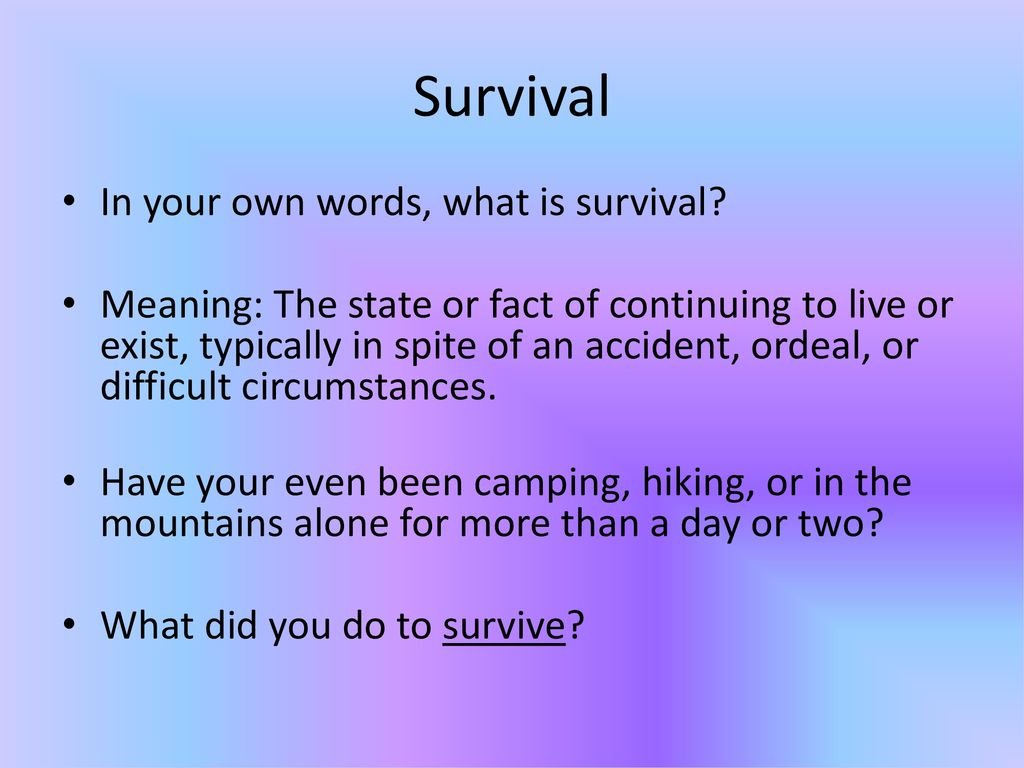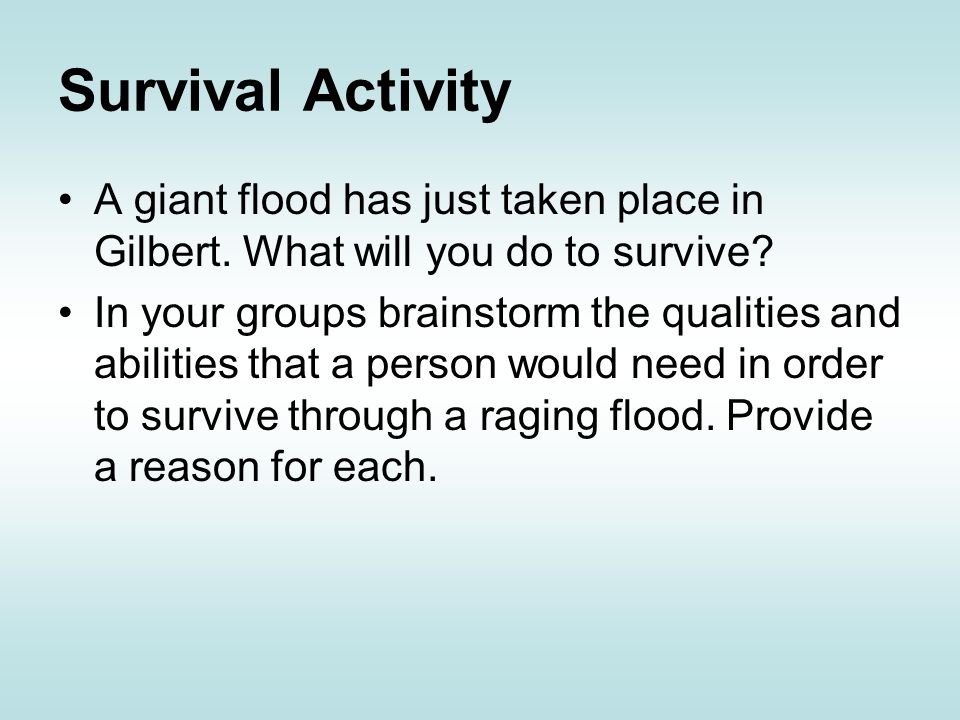Have you ever wondered what survivalism is all about and what it actually entails? Well, in this article, we are going to explore the world of survivalism and uncover its secrets. Whether you’re a beginner or have some knowledge about survivalism, we’ve got you covered. Get ready to delve into the fascinating world of survivalism and discover how it can help you be prepared for any situation that may come your way.
If you’re curious to know more about survivalism and its core principles, you’re in the right place. In this article, we’ll dive deeper into the history and philosophy behind survivalism, as well as the key skills and resources you need to become a survivalist. From learning essential survival skills to building your own emergency preparedness kit, we’ll provide you with valuable insights that will ultimately empower you to face any challenges that may arise. So sit back, relax, and get ready to embark on this thrilling journey into the world of survivalism.
What Is Survivalism?
Survivalism is a mindset and set of skills focused on preparing oneself for potential emergencies and adverse situations. It involves being self-reliant and capable of providing for one’s basic needs in the face of disruptions to regular infrastructure or services. Survivalists seek to develop a range of skills, accumulate necessary supplies, and cultivate a resilient mindset to ensure their ability to survive and thrive in challenging circumstances.
Defining Survivalism
At its core, survivalism is about being prepared for unexpected events that could disrupt society and the normal flow of everyday life. These events can range from natural disasters like hurricanes or earthquakes to man-made emergencies like power outages or civil unrest. Survivalists recognize the importance of being proactive rather than reactive when it comes to preparing for these situations.
Survivalism involves more than simply stockpiling supplies; it encompasses various aspects of personal readiness. This includes developing skills such as first aid, navigation, fire-starting, and shelter-building. It also involves acquiring essential tools, gear, and supplies, as well as cultivating a resilient mindset that can adapt and overcome adversity.
Origins of Survivalism
Survivalism as a movement has its roots in various historical events and societal developments. It is often associated with the Cold War era, when the threat of nuclear war and the potential collapse of society prompted individuals and families to prepare for an uncertain future. The concept gained further traction in the 1990s with the rise of the “prepper” movement, which emphasized self-sufficiency and preparedness in the face of potential emergencies.
In recent years, global events such as the COVID-19 pandemic, natural disasters, and political uncertainties have also contributed to the increasing interest in survivalism. People are recognizing the importance of being self-reliant and prepared for unforeseen circumstances that could disrupt their lives.
Benefits of Survivalism
Self-Reliance and Independence
One of the key benefits of survivalism is the ability to be self-reliant and independent. By developing the necessary skills and accumulating the right supplies, you can ensure your ability to provide for your basic needs even in the absence of regular infrastructure or external support systems. This sense of self-sufficiency can bring a great deal of peace of mind and confidence in your ability to navigate challenging situations.
Emergency Preparedness
Survivalism also enables you to be well-prepared for emergencies. By having a plan in place and the necessary supplies stocked up, you can minimize the uncertainty and stress that accompanies unexpected events. When disaster strikes, you will have the resources and knowledge to respond effectively, increasing your chances of not only surviving but also protecting your loved ones.
Ability to Navigate Adversity
Survivalism goes beyond physical preparedness; it also develops mental and emotional resilience. By embracing the survivalist mindset, you become accustomed to overcoming challenges and adapting to adverse conditions. This ability to navigate adversity can be beneficial not only in emergency situations but also in various aspects of life. It helps build a strong sense of perseverance, problem-solving skills, and the confidence to face whatever obstacles come your way.

This image is property of slideplayer.com.
Skills Needed for Survivalism
Basic First Aid
Basic first aid skills are essential for survivalists. Knowing how to treat wounds, stabilize injuries, and provide immediate medical care can be life-saving in emergency situations where professional medical help may not be readily available. Survivalists often undergo first aid training courses to acquire the necessary skills and knowledge.
Navigation and Orientation
Navigation and orientation skills are crucial for survivalists, especially in wilderness settings or during times when GPS or other electronic navigation tools may not be accessible. Being able to read maps, use a compass, and navigate unfamiliar terrain can help you find your way to safety or locate necessary resources.
Fire Starting and Shelter Building
Knowing how to start a fire and build a shelter are fundamental survival skills. Fire provides warmth, light, and the ability to cook food, while a well-built shelter protects you from the elements and provides a secure place to rest. Survivalists learn various techniques for fire starting, including using flint and steel, friction methods, or even solar power. They also explore different shelter-building techniques using natural materials or portable supplies.
Food and Water Procurement
Finding and procuring food and water is another essential skill for survivalists. This includes knowing how to identify edible plants, hunt or fish for food, and purify water sources. By understanding various methods of procurement, survivalists ensure their ability to sustain themselves in situations where access to food and clean water is limited.
Self-Defense
Self-defense is an important component of survivalism, as it equips individuals to protect themselves and their loved ones in potentially dangerous situations. Survivalists often undergo training in martial arts, firearms handling, or other self-defense techniques to enhance their ability to defend themselves effectively.
Survivalist Gear and Supplies
In addition to developing a range of skills, survivalists also accumulate various gear and supplies to enhance their readiness and ability to survive in adverse conditions.
Essential Survival Tools
Survivalists rely on a range of tools to meet their basic needs. These include items such as multi-tools, knives, flashlights, fishing gear, and communication devices. Each item serves a specific purpose and can be invaluable in a survival situation.
Emergency Food and Water Supplies
Survivalists stock up on non-perishable food items and water supplies to sustain themselves during emergencies. These supplies typically include canned food, freeze-dried meals, energy bars, and water purification systems.
First Aid Kit
A comprehensive first aid kit is a crucial survivalist supply. It should include essential medical supplies such as bandages, antiseptics, pain relievers, and other necessary items to treat injuries or illnesses.
Fire Starters and Shelter Materials
Survivalists carry fire starters such as lighters, matches, or fire starters that can withstand wet conditions. They also pack materials such as tarps, ropes, and blankets to building shelters or to provide additional protection from the elements.
Outdoor Clothing and Gear
Survivalists invest in outdoor clothing and gear suitable for different weather conditions and environments. This may include waterproof jackets, sturdy boots, hats, gloves, and backpacks. Layering clothing is also essential to adapt to changing temperatures.

This image is property of slideplayer.com.
Building a Survivalist Mindset
In addition to the practical skills and supplies, cultivating a survivalist mindset is crucial for effectively navigating challenging situations.
Developing Mental Resilience
Building mental resilience is a key aspect of survivalism. This involves developing a mindset that is adaptable, resilient, and able to handle stress and uncertainty. Positive self-talk, visualization, and stress-management techniques are often employed to foster mental strength and preparedness.
Understanding Risks and Threats
Survivalists actively educate themselves about potential risks and threats relevant to their location and circumstances. This involves staying informed about natural disasters, political developments, and societal risks that could impact their safety and well-being. By understanding these risks, survivalists can make informed decisions and take appropriate preparatory measures.
Maintaining Physical Fitness
Physical fitness is critical for survivalists, as it directly impacts their ability to perform necessary tasks and withstand demanding conditions. Regular exercise, strength training, and endurance-building activities are emphasized to ensure physical readiness.
Continuous Learning
Survivalists embrace lifelong learning and constantly seek to acquire new skills and knowledge. This could involve reading books, attending training courses, or learning from experienced survivalists. By continuously learning and expanding their skill set, survivalists ensure they are well-prepared for a wide range of potential scenarios.
Creating a Survival Plan
A survival plan is a crucial component of survivalism. It helps individuals and families prepare for emergencies and ensures that everyone is on the same page when it comes to responding to potential threats. A comprehensive survival plan should include the following elements:
Identify Potential Disasters and Threats
The first step in creating a survival plan is identifying the potential disasters and threats specific to your location and circumstances. This could include natural disasters such as earthquakes, hurricanes, or floods, as well as man-made emergencies like power outages or civil unrest. By identifying these risks, you can tailor your preparations accordingly.
Establish Evacuation Routes
In some situations, evacuation may be necessary. It is essential to establish evacuation routes and determine alternative destinations in case you need to leave your home quickly. Familiarize yourself with safe locations and shelters in your area.
Stockpiling Essential Supplies
A well-stocked supply of essential items is vital for survival. This includes food, water, medications, and other necessary provisions. Consider the number of individuals in your household and plan for their needs in an emergency. Regularly review and rotate your supplies to ensure freshness and usability.
Communication and Community
Establishing communication plans with family members, friends, and neighbors is crucial during emergencies. Determine methods of communication in case traditional forms are unavailable, such as using walkie-talkies or establishing a predetermined meeting place. Building a supportive community of like-minded individuals can also provide additional resources and support during challenging times.

This image is property of images.slideplayer.com.
Survivalist Communities
Survivalist communities are groups of individuals who share a common interest in preparedness and self-sufficiency. These communities provide support, networking opportunities, and the exchange of knowledge and skills.
Benefits of Joining a Survivalist Community
Joining a survivalist community offers several advantages. It allows for sharing resources and information, fostering a sense of belonging and support. Being part of a community can also encourage accountability and motivation in maintaining preparedness. Collaborating with others who have diverse skills and perspectives can enhance your own knowledge and preparedness efforts.
Types of Survivalist Communities
Survivalist communities come in various forms, ranging from smaller, localized groups to larger online communities. Some communities focus on specific areas of expertise, such as wilderness survival or urban preparedness. There may also be pre-existing survivalist communities in your local area that you can join or connect with.
Collaborative Preparedness
Survivalist communities often engage in collaborative preparedness activities, such as group training exercises or shared resources. This collaborative approach can enhance individual preparedness efforts by pooling knowledge, skills, and resources.
Survivalism in Modern Society
Increasing Popularity of Survivalism
Survivalism has gained increased popularity in recent years due to various global events and societal uncertainties. The COVID-19 pandemic served as a wake-up call for many individuals, highlighting the importance of being prepared for unexpected disruptions. Similarly, natural disasters and political unrest have prompted individuals to reevaluate their level of readiness and embrace survivalist practices.
Preparedness in Urban Environments
Survivalism is not limited to rural or wilderness settings; it is also relevant in urban environments. Urban survivalism emphasizes preparedness for emergencies in densely populated areas, where unique challenges may arise. This includes having plans for sheltering in place, navigating through urban environments, and securing resources in densely populated areas.

This image is property of www.biologyonline.com.
Criticism and Controversies Surrounding Survivalism
Perception and Stereotypes
Survivalism has often been subject to criticism and stereotypes. Some perceive survivalists as extreme or paranoid individuals who anticipate doomsday scenarios that may never occur. However, it’s important to recognize that survivalism is about preparedness for a range of potential emergencies, both big and small. It is not about actively seeking chaotic situations but rather being ready to navigate them if they arise.
Potential Extremism
While the vast majority of survivalists engage in the lifestyle for personal preparedness and self-sufficiency, a small minority may espouse extremist ideologies. It is crucial to differentiate between those who genuinely seek to be prepared for emergencies and those with ulterior motives. The mainstream survivalist community distances itself from any extremist views or actions.
Conclusion
Embracing survivalism is a proactive step towards personal preparedness and self-reliance. By developing a range of skills, accumulating essential supplies, and cultivating a resilient mindset, you can ensure your ability to navigate and thrive in adverse situations. Survivalism is not about living in fear or anticipating doomsday scenarios; it is about adapting to uncertain times and protecting yourself, your loved ones, and your community. So, start your journey towards preparedness today and embrace the survivalist mindset.

This image is property of 0701.static.prezi.com.
